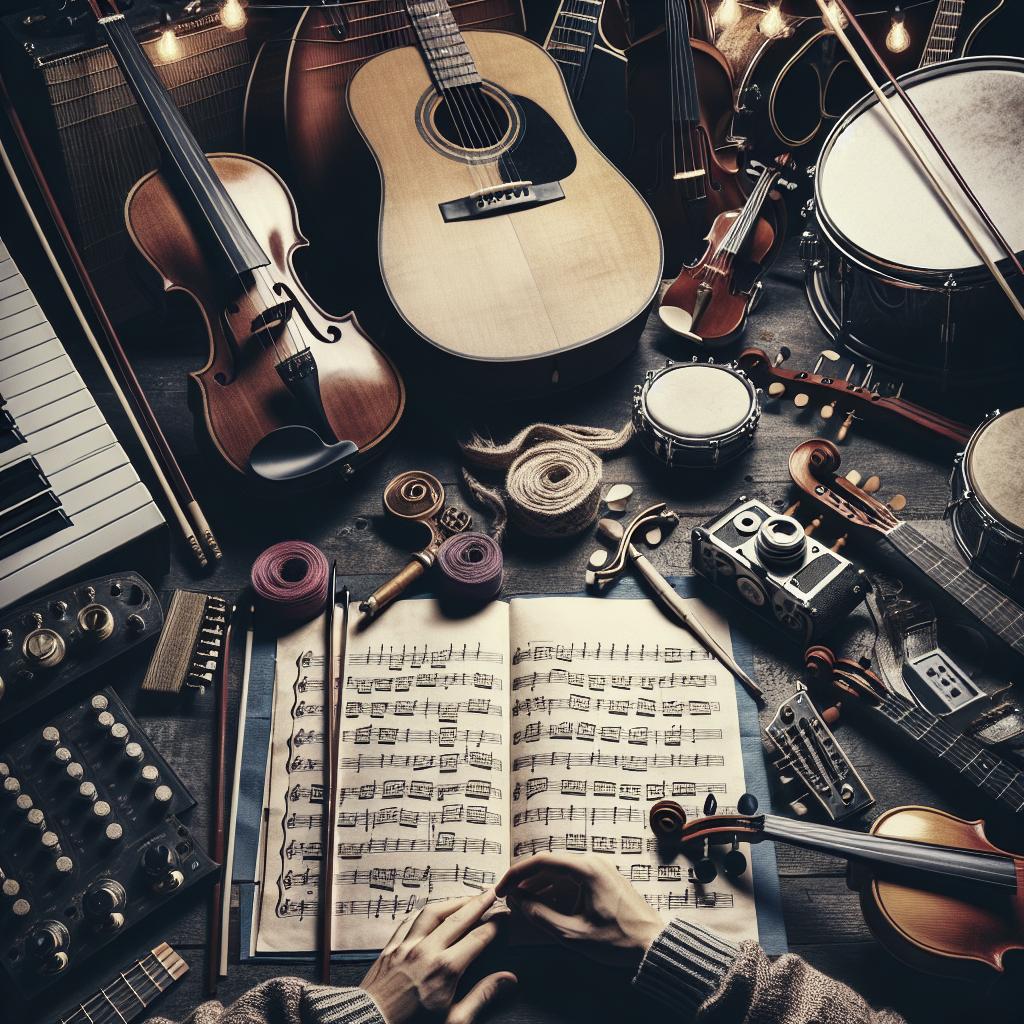“`html
Understanding Instrumentation in Music
In the world of music, instrumentation is the art of creating sound through the selection and arrangement of musical instruments in a composition. It is a core element that shapes the texture, mood, and emotional impact of a piece. From the gentle strumming of strings to the resonant notes of wind instruments, each choice in instrumentation adds a unique color to the music. This blog post delves into the various aspects of instrumentation in music, including the types of instrumentation, the nuances of string and wind techniques, and the intriguing concept of muting. Discover how these elements contribute to the richness and depth of musical storytelling.
Types of Instrumentation
Instrumentation in music refers to the combination and arrangement of different musical instruments used in a composition. It encompasses a wide array of sounds, from traditional orchestral setups to modern electronic ensembles. Each genre and style carries its own distinct instrumental tradition, which blends elements of rhythm, harmony, and melody.
The choice of instrumentation is pivotal in determining the overall sound of a piece. A classical symphony might feature a full orchestra with strings, woodwinds, brass, and percussion, creating a rich and dynamic soundscape. Conversely, a jazz ensemble might include a more limited selection, focusing on instruments that allow for improvisation and expressiveness, such as the saxophone and trumpet.
In contemporary music, technology has expanded the horizons of instrumentation. Electronic instruments, synthesizers, and digital samplers have become integral, offering virtually limitless possibilities in sound design and production. This opens new avenues for creativity, allowing musicians to craft unique auditory experiences that push traditional boundaries.
String Techniques
String techniques are the heart and soul of any orchestral or string ensemble composition. From the violin to the double bass, these instruments bring warmth and emotion to music through various playing techniques. Techniques such as pizzicato, where strings are plucked instead of bowed, add a crisp, percussive element. Meanwhile, legato playing, characterized by smooth, connected notes, evokes a flowing, singing quality.
Another striking technique is the use of harmonics, where light finger pressure on the strings produces ethereal, bell-like tones. These techniques allow for dynamic contrasts and expressive depth, breathing life into the music. In compositions across genres, from classical to modern, string techniques are expertly employed to highlight shifts in mood and intensity.
Double stops and tremolos also enrich the sonic palette. Playing multiple strings simultaneously (double stops) or rapidly alternating the bow (tremolo) can create a texture that ranges from lush and full-bodied to intense and dramatic. By understanding and utilizing these techniques, composers and musicians control the emotional resonance of their work.
Wind Techniques
Wind instruments form an essential pillar of instrumentation, known for their expressive power and versatility. Techniques such as embouchure, the way the musician shapes their mouth on the instrument, allow for nuanced control over tone and pitch. This is particularly evident in instruments like the flute, where a change in embouchure significantly affects the sound.
Articulation is another vital aspect, involving how notes are initiated and ended. Techniques like tonguing and slurring create distinct rhythms and seamless transitions between notes. Wind players often use circular breathing, a method that allows continuous sound production, enhancing long, sustained passages without interruption.
Extended techniques such as flutter tonguing or multiphonics (producing multiple notes simultaneously) push the boundaries of conventional wind performance. These approaches open new dimensions in sound exploration, inspiring composers to integrate avant-garde textures and colors into their work, challenging the listener’s perception of the instrument’s capabilities.
Muting
Muting in music is a fascinating technique that alters the instrument’s natural sound, providing composers with an additional layer of expressive potential. Both string and wind instruments can be muted to achieve a softer, more subdued tone. For string instruments, like the violin or cello, players often use a mute clip attached to the bridge, which dampens vibrations and creates an intimate, mellow sound.
In brass instruments, such as the trumpet or trombone, mutes come in various shapes and materials, each imparting a unique timbre from the gentle whisper of a straight mute to the compact, focused sound of a cup mute. This versatility in sound provides musicians with the ability to tailor their tonal quality to suit the mood and texture of the composition.
Muting is used creatively across genres, offering a sonic palette that ranges from the cinematic to the surreal. It allows musicians to experiment with dynamics and color, enabling subtle yet powerful emotional cues. From orchestras to jazz bands, muting remains a crucial and versatile tool in a musician’s repertoire.
Final Thoughts
| Aspect | Summary |
|---|---|
| Types of Instrumentation | Combines various instruments to create diverse soundscapes. Encompasses classical setups to modern electronic ensembles. |
| String Techniques | Include pizzicato, legato, harmonics, double stops, and tremolos to enhance expressiveness and mood through strings. |
| Wind Techniques | Focuses on embouchure, articulation, and advanced methods like circular breathing and extended techniques for versatile sounds. |
| Muting | Alters instrument sound to achieve softer tones, using clips or various mutes, adding emotional depth and variety. |
“`


